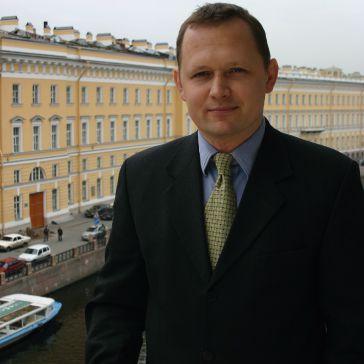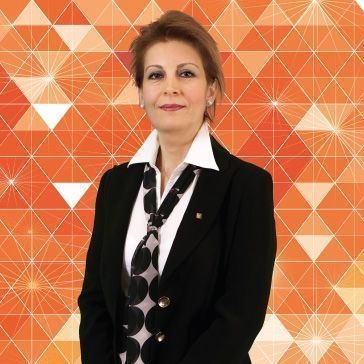On March 27, CEE Legal Matters reported that Capital Legal Services had become the first Russian firm to open an office in Finland. The Managing Partner of CLS, Vladislav Zabrodin, has agreed to answer several questions about the new office and the firm’s overall plans for our readers.

Vladislav Zabrodin
CEELM: The first question is the most obvious: Why did CLS open an office in Helsinki, and why now?
VZ: First of all, it is exciting to be the first Russian law firm on the Finnish market. I have been personally and professionally connected with Finland since 1992 and from that point of view this move was a very natural development of the work that we do for our Finnish clients, of our communication and cooperation with our Finnish colleagues and a natural reaction to the mutual interest and cooperation between our neighboring countries.
We consider Finland an important area for our growth. The decision to come to Helsinki was made after comprehensive evaluation of the Finnish market and discussions with our Finnish colleagues and is based on our understanding of the needs and potential of Finnish business.
As mentioned above, opening the office in Helsinki was a logical step for CLS which has been assisting Finnish companies doing business in Russia since its establishment in 1999. But it is not only Finnish companies that CLS aims to see as potential clients in Helsinki. Thanks to the city’s good connections and Finland’s reputation as a gateway to Russia, many American, Japanese and Korean companies choose Finland as a last stop before entering the Russian market. The Helsinki office will support CLS’ existing offices in St. Petersburg and Moscow in providing services to all international clients.
Finland and Russia have long economic ties and it only takes 3.5 hours to get to St. Petersburg from Helsinki by train. It’s important to understand that the Russian market isn’t saturated yet and there is still plenty of room for new products and services and great potential for growth.
It is also our strong belief that the only way to improve understanding and cooperation between Russia and Europe is by cultivating our economic relations. Despite the current troubles, this economic cooperation needs to continue and this is the best way to improve the situation.
CEELM: Does CLS have plans to open up offices in any other Nordic/Scandinavian countries, or anywhere else in CEE?
VZ: We have a strong and well-established cooperation with our legal colleagues all around Europe including Nordic countries, and we deal with lawyers and law firms around the globe. The world today is very interconnected and it is no longer a necessity to be in many countries to have a broad international presence. At this stage, we are still focused on development in Russia which is a huge market with immense potential, CIS countries where our clients are looking for consistent and reliable representation and Finland which has great potential due to interest in the Russian market and historical and business connection to Russia.
CEELM: How many lawyers are in the Finnish office now, and is that number expected to grow in the next year or two?
VZ: At the first stage, the firm will employ three people in Helsinki, but the aim is to grow in the coming years. We are clear with our plans for development in Finland for the next 5 years. However, I will not be surprised if we revisit these plans at the end of this year as I strongly believe that the office has great potential and promise.
CEELM: CLS is perhaps best known for its Corporate/M&A and PPP work — are those the same areas you expect the Finnish office to focus on?
VZ: Many people have a vague understanding of what kind of issues to expect when entering the Russian market. We are very good in supporting companies with their first move into Russia and then in supporting their development on the market. According to information provided by the Association of European Businesses, 70% of European companies that are on the Russian market today, planned well ahead to develop their presence here. We know how to make this progress more efficient and comfortable.
In addition to the aforementioned, we have very strong teams in real estate, construction, compliance, antitrust, labor, IP and litigation fields.
The level of technological development and know-how in Finland also means that more and more Russian businesses are or will be looking for joint ventures and technology acquisition there. More and more Russian companies are also looking for public-private partnership projects in Finland. We can offer insight on both markets.
CEELM: How did the firm come to develop a strong Finnish practice to the point that opening an office there became necessary/possible?
VZ: Our idea is to offer another level of understanding and comfort on the Russian market and being closer to the clients and those companies who are still thinking about joining the Russian market but do not feel comfortable enough to make the first step. We hope our presence in Helsinki will allow us to ease introduction of Russia to Finnish business and through this to build a base on which they can expand into Russia if they so desire. We will also be able to tackle the initial issues of Russian companies when they enter the Western market.
We are going to cooperate with a number of Finnish law firms to improve and diversify the services we offer to Russian, Finnish and international companies entering either or both these markets. We hope to encourage closer ties between companies in the two markets and to bring them closer together.
CEELM: Do you expect to see other Russian firms following CLS into the Nordic countries anytime soon?
VZ: Moscow’s legal market is big and distant from Finland and there is still much development that can be achieved in Moscow. St. Petersburg’s legal market is a more natural place for a step into Finland; however, for significant number of players there, it’s not a natural decision. CLS is setting an example by being the first Russian full service law firm to open office in Helsinki. Our decision is based on strong business relations with major Finnish companies and on the understanding that we will be effective. When other law firms get the same motivation and capabilities, they will be sure to follow.
CEELM: Is this a sign that Russian law firms are starting to expand westward, as the English and American firms have been moving eastward?
VZ: It is still early to say this. Russian firms are growing and developing in the strong competition with international firms that operate on the Russian market. We are learning from the best and are competing with them. You can see that inside Russia this competition is growing strong. I am sure that we will get to this level some time, but as of today it is still early and Russia is still offering very good prospects for development.
CEELM: How did you decide to have Eero Mora lead the office in Finland? How did your relationship with him begin?
VZ: Eero was recommended to me by my good colleague and he is a very knowledgeable and experienced lawyer, as well as a visible person on the Finnish legal market. After our first meeting, it became clear that he may become a very important asset to our team. He is also a very reliable person and an excellent team player with a very good reputation and these are very important qualities in this situation. Needless to say, my partners and I enjoy working with him. I have reasons to believe that this feeling is mutual.
CEELM: How and why did the firm develop its Finnish practice in the first place?
VZ: In 1992 I received one of my first international diplomas from the International Trade Law Course in the University of Turku. After returning to Russia, I became the first General Director of Partek’s Russian subsidiary. Since then Partek (now Paroc) has been a client of mine. I am very proud of this long-term relationship. By the way, I am very happy to mention that last year Paroc opened their first production facility in Russia and did it in a record short period of time, and they are now working on the second stage of the factory.
Since the beginning of 90’s we have always been connected with the Finnish market and working with Finnish clients. I have very good friends there both professionally and personally. Over the years, I’ve met and made friends with many Finnish colleagues. I think that Finnish people in general are extremely honest and hard working, smart and considerate. I have great respect for these qualities. My experience shows that mutual respect and trust eventually result in long term and beneficial cooperation.

